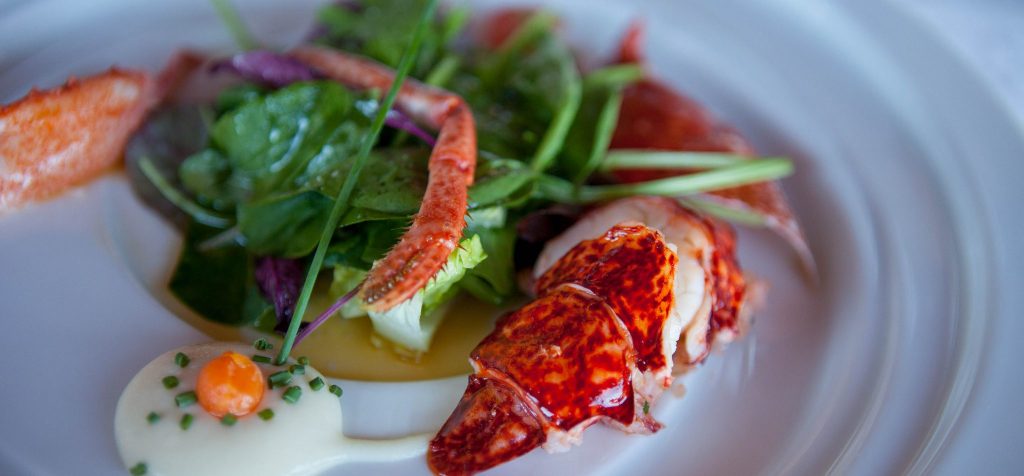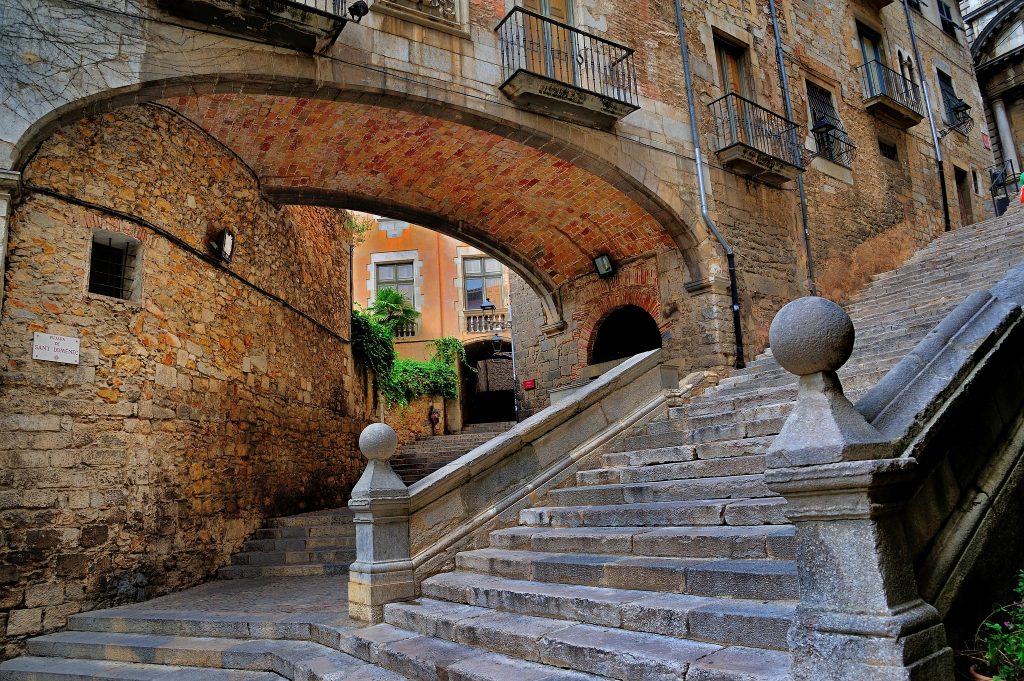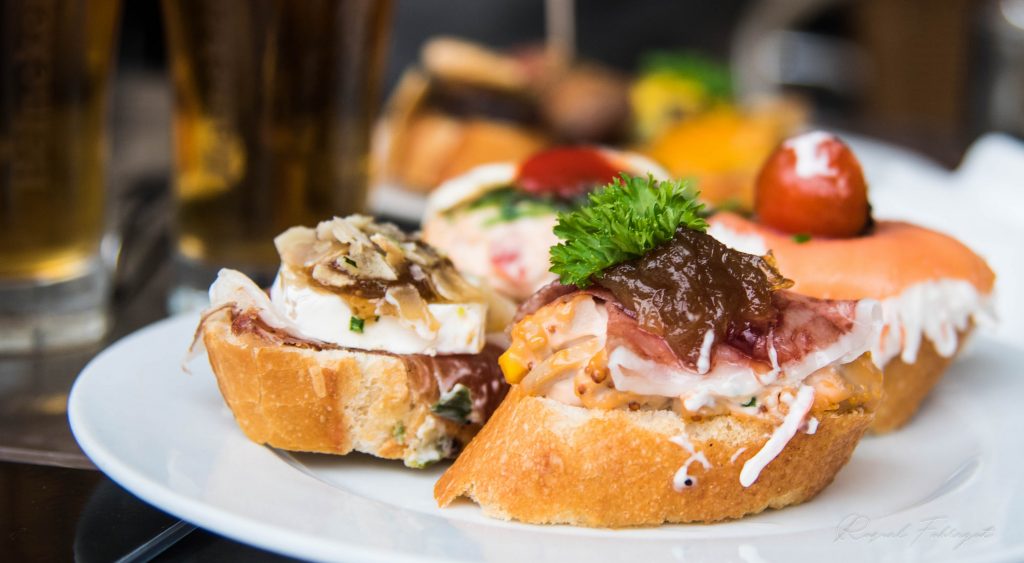Spain is a country steeped in wine and wine lore. Wine is important in Spain and as a consequence, many wine consumers have a clear view of Spanish wines. Or rather, they think they do, as this view is almost universally red and more often than not from Rioja.
Actually, Spain produces an incredible variety of wines; for reds unlike anything from Rioja – try a Bierzo made from the Mencia grape, for some of the finest rosé wines in the world – try a Ribero del Duero Rosado from the Tinto Fino (Tempranillo) grape, while the array of white wines that the country produces is dazzling. 
Galicia’s Rías Baixas region and its star grape Albariño are pretty well known, but there is so much more, all the other Galician wine areas for a start, as well as Rueda.
However one of the most intriguing Spanish white wines is Chacolí from the Pais Vasco – Txakoli in Basque.
Historically, the red and white wines of Vizcaya and Alava, as well as Guipúzcoa were highly appreciated and traded at relatively low prices. But in 1853, when powdery mildew arrived to the region, vine cultivation dropped consideradibly. Red wine production was abandoned, and white wine was restricted to Getaria, where the vineyards facing the sea could better resist the odium.

Txakoli became a local commodity, cheaply priced and at very low alcohol (8%-11%), with some acidity and bubbles from rapid bottling.
Fortunately, in the 1990s everything changed. Young innovative wine lovers with new ideas and a deep appreciation for science and experimentation arrived. The Txakoli renaissance started in Bizkaia, a province where production was almost non-existent, and spread across the region.
With precision viticulture, modern wine trellising and climate and soil knowledge, indigenous grapes can now ripen regularly, with sugar levels between 10.5% and 13% The result is an aromatic wine with low alcohol and a crisp acidity.
The Grapes

Approximately 90% of Chacolí is made from the white Hondarrabi Zuri grape. This is genetically identical to the Courbu grape, found in Jurançon in the southwest French Basque region.
And let’s not forget red Txakoli, mostly made from Hondarrabi Beltza grapes (beltza means ‘black’ in Basque).
Apart from the 3 Chacolí DOs these grapes are not grown anywhere else in the world and very little seems to be known about them. However, in the past grapes were often known by the name of the place they were imported from; Syrah – Syracuse. Or by the name of the place they were marketed from; Auxerrois – Auxerre, Beaunois (Chardonnay) – Beaune etc.. So, it is quite likely that these grapes either originate from the town of Hondarribia – right on the border with France, near Hendaye – or were introduced to the region via Hondarribia.
DO Getariako Txakolina (Basque) – DO Chacolí de Getaria (Castilian)

In my experience, this is the one most widely encountered and includes the 2 most famous producers of Chacolí in export markets – Txomin Etxaniz and Ameztoi. It was also the first DO created for Chacolí, in 1989.
This beautiful area covers just 327 hectares (810 acres) of wild headland right on the coast around the lovely town of Getaria, which sticks out into the Bay of Biscay to the west of San Sebastián in the province of Gipuzkoa. Interestingly there is a Getaria in the neighbouring French Basque region of Labourd.
Getariako Txakolina can only be made from Hondarrabi Zuri and Hondarrabi Beltza and to date there are only 18 producers producing 1.5 million litres of wine.
At their best, these wines can be as scintillating, refreshing and bracing as a walk along the seashore. They are light-bodied, have high acidity and tend to be light in alcohol, around 10.5%-11%, with green apple characters and even a trace of a salty tang and a slight spritz that makes them wonderful as an aperitif or with a salad, seafood and virtually any alfresco meal including, traditionally olives and anchovies.
Producers to try:
Ameztoi Txakolina, including their rosado Rubentis Ameztoi and sparkling Espumante de Txakoli (as the area is not part of DO Cava).
Txomín Etxaniz, including their sparkling Eugenia and their late harvest/vendimia vardía Uydi.
DO Bizkaiko Txakolina (Basque) – DO Chacolí de Bizcaia (Castilian)

We are less likely to get to taste this outside the local area, as although there are 69 producers they only farm some 201 hectares (500 acres) and produce a million litres of wine a year.
Again this DO, created in 1994, uses the Hondarrabi Zuri and Hondarrabi Beltza together with Folle Blanche (Munemahatsa in Basque) – which was the original grape used to make Armagnac, which is in Gascony and was also part of the old Kingdom of Navarra, along with the Basque country. It is still used in Armangnac, but has lost ground to its hybrid offspring – Baco Blanc.
Bizkaiko Txakolina tends to be a little richer and higher in alcohol at around 12.5%. This makes the wines a bit rounder and more mainstream than those from Getaria, so appeal to people other than lovers of rampant acidity. My notes of the few I have managed to taste keep referring back to citrus fruit rather than the green apple in the Getaria wines, they also often have less obvious sparkle.
Producers to try: Virgen de Lorea – especially their Txakoli Señorío de Otxaran, also Marko made by Oxer Bastegieta.
DO Arabako Txakolina (Basque) – DO Chacolí de Álava (Castilian)

The baby of the bunch, Arabako Txakolina was only granted DO status in 2001, covers a mere 50 hectares (125 acres) and can boast just 5 producers who make around 200,000 litres of wine a year.
Grape wise this area gets a little more interesting, Hondarrabi Zuri and Hondarrabi Beltza are still the stars, but supporting roles are given to Petit Manseng, Petit Corbu and Gross Manseng. These are all more famously used to make Pacherenc de Vic Bilh in the French part of the Basque lands, while Petit Manseng also makes the great sweet wines of Jurançon.
It seems to me that these wines can successfully marry the freshness of Getari with the extra weight of Bizcaia. They still have high acidity, but it is less overwhelming, while the flavours tend towards the citrus and the mineral with the more exotic grapes introducing a floral character – a region to watch.
Producers to try: Ametza Txakoli made by Arzabro.
More to Come? Chacolí in Cantabria
It appears that Chacolí as a purely Basque drink is a recent phenomenon. In the nineteenth century, I am informed that the neighbouring province of Cantabria produced and exported far more Chacolí than the Pais Vasco – nowadays of course Cantabria is famous for cider and has no DO wine regions. So, if the demand for Chacolí continues to grow perhaps Cantabria will restart production?
Burgos
The province of Burgos in Castilla y León goes a long way north and right on the border with the Basque province of Vizcaya there is a place called Valle de Mena. It is not far from Bilbao or DO Arabako Txakolin and has traditionally produced Chacolí and continues to do so, but has so far failed to achieve DO status.
Try it!!
Chacolí might not be to everyone’s taste, but if you enjoy light, fresh, zesty and mineral wines that partner shellfish to perfection then try one to see what you have been missing.
Feature Tours
A Weekend Escape to San Sebastian
When most people think of the Basque Country, they think of Spain. Bilbao began the Guggenheim effect;
Girona Jewish Cuisine & Culture Tour
Today you’ll explore two charming towns just north of Barcelona steeped in Jewish culture. In the
Premium San Sebastian Gastronomy Tour
Anyone who adores food, needs to visit the northern Spain’s Basque Country at least once. Gastronomy,
looking for the very best food and wine experiences.
Since 2005, Catavino has been exploring the Iberian Peninsula looking for the very best food and wine experiences.
Feature Stories
Catavino is the best place to learn about travel, food
and wine in Portugal and Spain.







